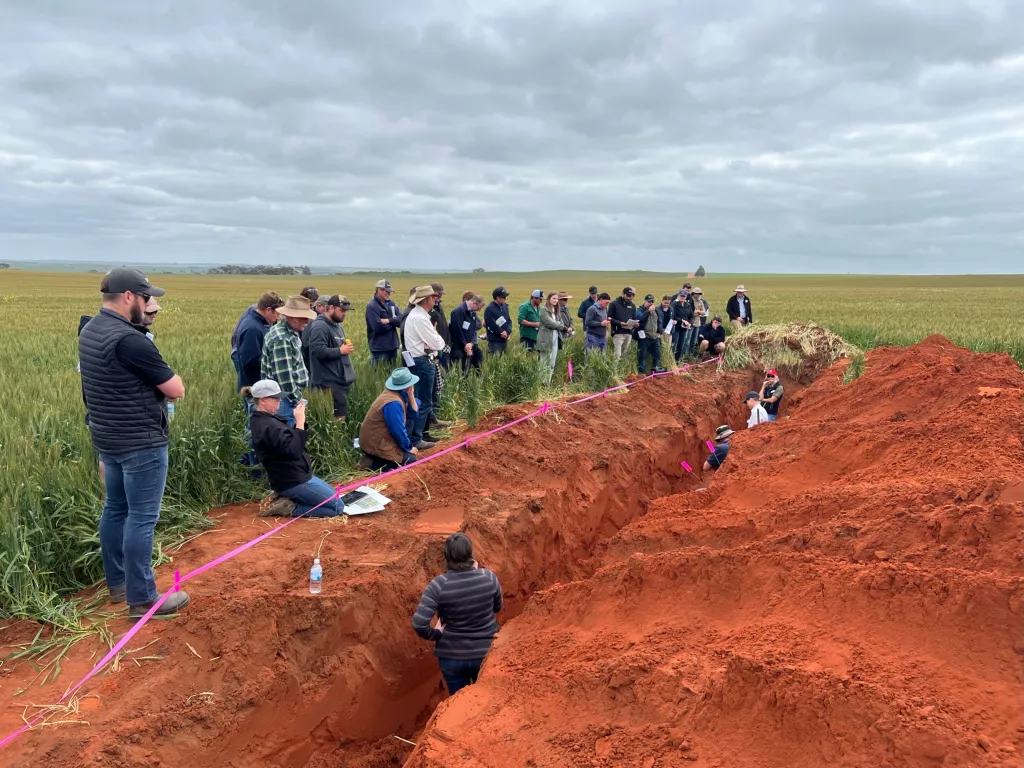New WMG Plan Tackling the Elephant in the Room
By Nathan Craig, WMG Chief Executive Officer
Over the past few months, it has become apparent that we need to rethink the process of project delivery as we continue to innovate in the way WMG supports its members and the agricultural industry.
Industry and government funding are the main avenues for funding research, demonstration, and extension activities needed to support the growth of our farming community. While we have specific questions that we are trying to answer for our farmers, each funding body has a bigger picture outcome that it is trying to achieve; every project has a desired outcome.
In the past, it was assumed that the project outcome will be achieved if the on-ground activities are completed, and the communication and extension outputs are delivered. For large, transformative innovation such as GPS guidance, this was certainly the case.
This assumption has come under pressure in recent years as accountability for public funding has increased and the need to show impact for tax-payers money spent. A rather undesirable outcome for any publicly funded body would be to be accused of not spending tax-payers money effectively, let alone not achieving change in the investment area. Funding is also likely under pressure from the slowdown of the agricultural productivity growth index since 2000, where agricultural growth was steaming along at 2.1% prior to 2000 and 0.6% post-2000 (Figure 1). The likely reasons for this change pre- and post-2000 appear to be the adoption of labour-saving mechanisation (e.g. GPS guidance, larger machinery) and structural adjustment (changes from wool to cropping), however, most of these large advances are now complete (ABARES 2023).

Further advances in agricultural productivity are likely to come from changing from low value to higher value farm enterprises, or incremental increases in farm productivity (ABARES 2023). The challenge with incremental increases in farm productivity is that often what is needed on one farm business is not the same as another. All farming businesses are similar but different at the same time.
Future advances in farm productivity will rely on connecting individual farmers with the specific practices and technologies needed to drive his farm growth. Being able to connect the farming practice with the right farmer is the key to adoption in the future as the assumption that all new practices are inherently and universally adoptable is no longer relevant.
To address this, WMG have been advancing the development of a new model of extension for this new working environment that we face. As we have been delivering projects under our new engagement model, it has become increasingly evident that our project planning needs to take a step up as well.
The new WMG project planning model which consists of 3 core aspects: the activity work plan, the extension plan, and the project story (Figure 2). Each are designed to work together to optimise the delivery of the project. The activity work plan sets out the on-ground project activities and is typical of most project plans. The extension plan has a twist question – who actually is the target audience of the project? Finally, the project story works on developing a cohesive narrative that brings all the story together.

Bringing these three core plans together is the key for project officers to really understand the project and to integrate all aspects together in a coherent story. The focus is on a coordinated approach that is supported by the WMG Adoption Pathway and approach to extension where farmers are guided along the adoption pathway.
Perhaps the most important piece is the project story, as effective communications can be difficult to write when we didn’t have a clear view of how the project outcome was going to practically help farmers improve the sustainability of their farming practices.
The most important aspect of this approach is that the activities, outputs, and outcomes of the project are all addressed, and this goes a long way in ensuring that the project has a chance of achieving its outcome.
This process has now been employed in about 20% of the projects being delivered by WMG and has been a huge step up in how we understand each project. Most importantly, it helps to identify other factors that need to be considered when communicating with farmers so that adoption can be considered.
WMG has a lofty goal for using this model – to reduce the variability in project delivery by 80%. That is, to have 80% chance that a project will be delivered without any hitch. Currently, most projects require a refocus at least once a year as the season changes, attendance at an event is lower than expected, etc. This approach will ensure that project outcomes are delivered for both our farming community to drive the sustainable growth of agriculture, and funnily enough, achieve the same outcome for the funding bodies.












